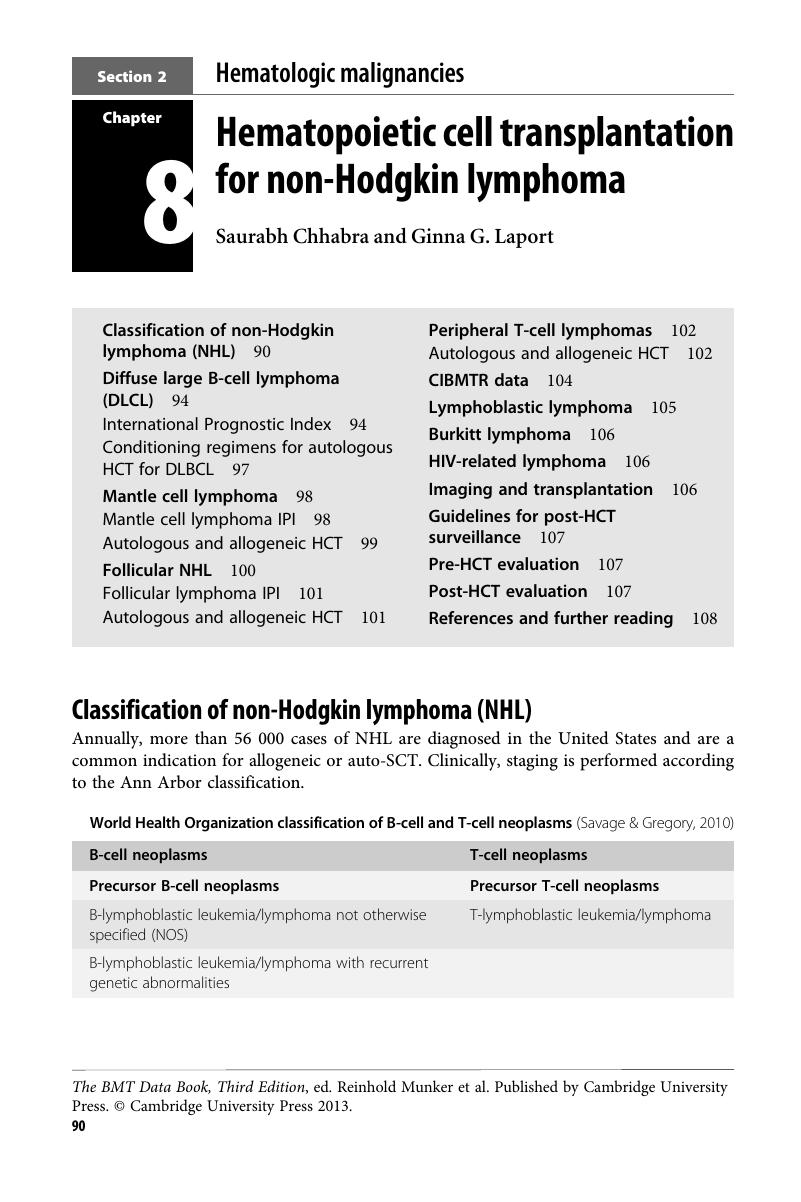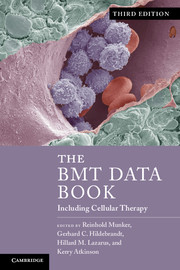Book contents
- Frontmatter
- Contents
- List of contributors
- Foreword
- Preface
- Acknowledgments
- Section 1 Basic science
- Section 2 Hematologic malignancies
- 3 Therapeutic decision making in BMT/SCT for acute myeloid leukemia
- 4 Therapeutic decision making in BMT/SCT for acute lymphoblastic leukemia
- 5 Therapeutic decision making in BMT/SCT for chronic myeloid leukemia and other myeloproliferative syndromes
- 6 Therapeutic decision making in BMT/SCT for chronic lymphatic leukemia
- 7 Therapeutic decision making in BMT/SCT for myelodysplasia
- 8 Hematopoietic cell transplantation for non-Hodgkin lymphoma
- 9 Therapeutic decision making in BMT/SCT for Hodgkin lymphoma
- 10 Therapeutic decision making in hematopoietic SCT for multiple myeloma
- 11 Therapeutic decision making in SCT for amyloidosis
- Section 3 Solid tumors
- Section 4 Nonmalignant disorders
- Section 5 Cellular therapy
- Section 6 Practical aspects and procedures
- Section 7 Complications
- Section 8 The BMT/SCT pharmacopoeia
- Section 9 HLA-testing and laboratory medicine
- Appendix Guide to the internet and literature databases relevant for BMT/SCT
- Index
- References
8 - Hematopoietic cell transplantation for non-Hodgkin lymphoma
Published online by Cambridge University Press: 05 August 2013
- Frontmatter
- Contents
- List of contributors
- Foreword
- Preface
- Acknowledgments
- Section 1 Basic science
- Section 2 Hematologic malignancies
- 3 Therapeutic decision making in BMT/SCT for acute myeloid leukemia
- 4 Therapeutic decision making in BMT/SCT for acute lymphoblastic leukemia
- 5 Therapeutic decision making in BMT/SCT for chronic myeloid leukemia and other myeloproliferative syndromes
- 6 Therapeutic decision making in BMT/SCT for chronic lymphatic leukemia
- 7 Therapeutic decision making in BMT/SCT for myelodysplasia
- 8 Hematopoietic cell transplantation for non-Hodgkin lymphoma
- 9 Therapeutic decision making in BMT/SCT for Hodgkin lymphoma
- 10 Therapeutic decision making in hematopoietic SCT for multiple myeloma
- 11 Therapeutic decision making in SCT for amyloidosis
- Section 3 Solid tumors
- Section 4 Nonmalignant disorders
- Section 5 Cellular therapy
- Section 6 Practical aspects and procedures
- Section 7 Complications
- Section 8 The BMT/SCT pharmacopoeia
- Section 9 HLA-testing and laboratory medicine
- Appendix Guide to the internet and literature databases relevant for BMT/SCT
- Index
- References
Summary

- Type
- Chapter
- Information
- The BMT Data BookIncluding Cellular Therapy, pp. 90 - 112Publisher: Cambridge University PressPrint publication year: 2013



